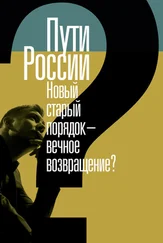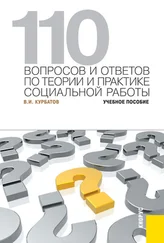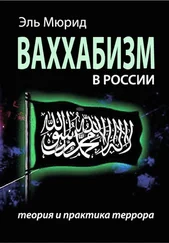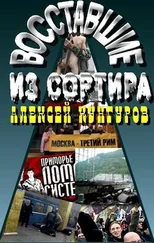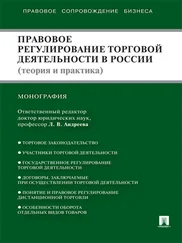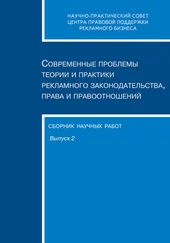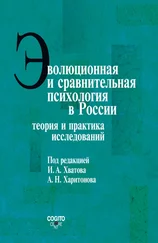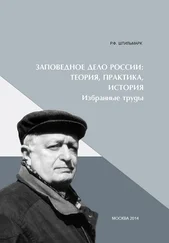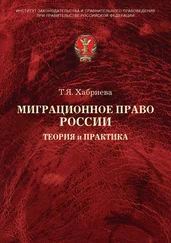Сборник статей - Революции в России. Теория и практика социальных преобразований
Здесь есть возможность читать онлайн «Сборник статей - Революции в России. Теория и практика социальных преобразований» — ознакомительный отрывок электронной книги совершенно бесплатно, а после прочтения отрывка купить полную версию. В некоторых случаях можно слушать аудио, скачать через торрент в формате fb2 и присутствует краткое содержание. ISBN: , Жанр: История, Прочая научная литература, на русском языке. Описание произведения, (предисловие) а так же отзывы посетителей доступны на портале библиотеки ЛибКат.
- Название:Революции в России. Теория и практика социальных преобразований
- Автор:
- Жанр:
- Год:неизвестен
- ISBN:978-5-4263-0679-0
- Рейтинг книги:3 / 5. Голосов: 1
-
Избранное:Добавить в избранное
- Отзывы:
-
Ваша оценка:
- 60
- 1
- 2
- 3
- 4
- 5
Революции в России. Теория и практика социальных преобразований: краткое содержание, описание и аннотация
Предлагаем к чтению аннотацию, описание, краткое содержание или предисловие (зависит от того, что написал сам автор книги «Революции в России. Теория и практика социальных преобразований»). Если вы не нашли необходимую информацию о книге — напишите в комментариях, мы постараемся отыскать её.
Сборник издан при финансовой поддержке Фонда «История Отечества».
Революции в России. Теория и практика социальных преобразований — читать онлайн ознакомительный отрывок
Ниже представлен текст книги, разбитый по страницам. Система сохранения места последней прочитанной страницы, позволяет с удобством читать онлайн бесплатно книгу «Революции в России. Теория и практика социальных преобразований», без необходимости каждый раз заново искать на чём Вы остановились. Поставьте закладку, и сможете в любой момент перейти на страницу, на которой закончили чтение.
Интервал:
Закладка:
On the other hand the conditions of war communism brought the notions of “transitional period” and “socialism” too close to each other in theoretical terms. Bukharin and Preobrazhensky’s The ABC of Communism gave a theoretical basis to the conflation of war communism (as a relatively integrated sequence of economic policy measures) and the realization of socialism as such. The work was a curious mixture of the mutually exclusive ideas of Soviet labor self-government and state socialism. These two famous Bolshevik writers attempted to “translate” the Marxist conception of socialism into the reality of war communism. It was as if the first stage of communism, the realization of socialism, was coming into a state of full development, and was able to transcend commodity and finance relations thanks to both unprecedented inflation and the forced measures of war communism:
But it is perfectly plain that we cannot believe State capitalism to be possible unless we also believe in the possibility of the socialist organization of economic life. The only difference between the two systems lies in this, that in one case industry is organized by the bourgeois State, and that in the other case it is organized by the proletarian State. 11 11 Bukharin N ., Preobrazhensky E. The ABC of Communism / Translated from the Russian by Eden and Cedar Paul. Harmondsworth, Middlesex: Penguin Books, 1969. P. 209; in Russian: Bukharin N ., Preobrazhenskiy Y. Azbuka kommunizma. Petersburg: Gosizdat Peterburg, 1920. P. 123–125.
Left unexplained was that the matter does not simply rest on state power, for in war communism the state as a military force of authority, as a “deterrent to class enemies through dictatorial” power, acted as the mainspring of the economy. This had no roots in any form of Marxist theoretical tradition from Marx’s own time, and even contradicted his period’s idea of socialism. Lenin was not so naive as to identify war communism with “complete socialism,” for he continued to believe that “as long as workers and peasants remain, socialism has not been achieved”. 12 12 LCW. Vol. 30. P. 506.
Moreover, he never deduced the concept of equality theoretically from the reality of war communism, using it only to refer to eliminating social class in economic terms, a final and indispensable requirement of the liberation from capital and achieving freedom. Lenin’s real theoretical mistake in 1919–1920 was that he overestimated the possibilities of socialization, of social supervision within the framework of nationalization, and underestimated the inveteracy of the market and money in a regulating role, a fact he later recognized. The “atmosphere” of the epoch, the romantic attitude of the civil war, was also expressed in war communism’s compulsory egalitarianism. The roots of this “primitive” egalitarianism ran deep in Red Army units and partisan brigades engaged in life-and-death combat with the Whites – a phenomenon picked up by innumerable literary works and films. War communism also influenced theory, which interpreted the “system” as socialism, despite that being suggestive of an anachronism – especially in light of the famous thesis of the “semi-state” in State and Revolution (which can be traced back to Marx). There, Lenin was already engaged in a polemical attack on what was a conceptual muddle. He used Engels’ critique of the draft program of Erfurt, which he had handed over to Kautsky in 1891, who published it a decade later in Neue Zeit . This is interesting because the “opportunist wing” of the social democrats had already suggested that the state, in itself, might be able to consolidate socialism. This line of thought incorporated the increased role of the state in modern capitalism. Lenin mentions the concept of “state socialism,” opposed to the revolution and revolutionary socialism, inasmuch as the role of socialism is defined in opposition to the state.
War communism’s focus was on the consolidation of the new military-power hierarchy under civil war conditions, even though it simultaneously exacerbated the economic situation. Meanwhile, Lenin held that socialism, as a system that had reached completion, would only be composed of voluntary associations of economic-productive communities organized from below. It was still a state, though, for “there remains for a time not only bourgeois law, but even the bourgeois state, without the bourgeoisie” in order to defend the “equality of labor” and public property. 13 13 LCW. Vol. 25. P. 471.
Lenin differentiated between state and social property even at its inception; before the introduction of war communism, he believed that the productive classes would themselves have to create socialist conditions. War communism was, however, a consistent system of compulsory state-military measures; according to some writers it carried certain traits of the state economic policy of “German war socialism.” Lenin kept the formative theory in sight even while making his most propagandistic political speeches, indicating that until his last day he continued to view the history of the revolution through the lens of Marxist theory (as reconstructed by him). 14 14 Lenin could not have known that under the decades of “state socialist” and “existing socialist” rule hordes of writers who considered themselves Marxists would mix-and-match state and social property together – arm in arm with the (neo)liberals and neoconservatives. Not to mention the false explanations that have come to the fore since the collapse of state socialism, the most typical and common of which is state socialism being called “communism.”
Until March 1919, Lenin did not even use the term war communism, and did so afterward mostly in quotation marks. This means that, not just had Lenin not planned “war communism” in either theory or practical political terms, but also that the war communist measures only “coalesced” into a system much later, by the summer of 1919. The “naturalization” of production and distribution, along with the introduction of the ration system and the persecution of private trade, were not a priori economic measures, but sprang from immediate political and social needs.
Just as war communism was not the application of a theory, neither was the NEP the experiment or exercise of one. The Soviet government implemented both war communism and the NEP under the pressure of concrete circumstances, requirements, and needs – without foreseeing its internal or international effects. In both cases their ideologies – the theoretical justification of the “systems” – were developed either parallel to their introduction, or as a follow-up (though war communism incorporated a number of elements from German war economic policy, and the NEP included elements from the “market economy” of the winter and spring of 1918). The NEP meant substituting militarized production – including the ration system, strict state distribution, and the compulsory appropriation of grain – with money and market conditions, reinstituting free trade and introducing taxes in kind. Often forgotten is that, at the same time, the partial reinstatement of capitalist conditions entailed a general social transformation, a restructuring of social classes and groups, and a change in their relationships.
The introduction of a market economy and direct democracy – broadening “workers’ democracy” – also proved to be a contradiction that could not be bridged. Significant segments of the laboring masses became tired of the sacrifices they were called upon to make and were demanding a “loosening of the bolts,” but very few were in possession of the skills required for direct democracy. Lenin later expressed the necessity of the NEP, neatly and self-critically summarizing it at the 11th Party Congress in the spring of 1922: “We must organise things in such a way as to make possible the customary operation of capitalist economy and capitalist exchange, because this is essential for the people”. 15 15 See: Lenin’s speech at the 11th Congress in March 1922 // LCW. Vol. 33. P. 279.
One of the main trends of the current historical literature 16 16 Studies, books, and publications of sources related to the NEP can hardly be followed in recent years. See among more recent works the book under the name of A.N. Yakovlev, and written by colleagues, which contains an extensive large collection of material, Rossiya nepovskaya (Moscow: Noviy hronograf, 2002).
emphasizes the capitalist market characteristic of the NEP, but also that – with its well-known measures permitting rural wage labor from 1922 onward – the Soviet state integrated social conflicts into the as yet not fully formed “web” of Soviet society, which later threatened instability and inner combustion, and finally had a major role in the later defeat of the NEP.
Интервал:
Закладка:
Похожие книги на «Революции в России. Теория и практика социальных преобразований»
Представляем Вашему вниманию похожие книги на «Революции в России. Теория и практика социальных преобразований» списком для выбора. Мы отобрали схожую по названию и смыслу литературу в надежде предоставить читателям больше вариантов отыскать новые, интересные, ещё непрочитанные произведения.
Обсуждение, отзывы о книге «Революции в России. Теория и практика социальных преобразований» и просто собственные мнения читателей. Оставьте ваши комментарии, напишите, что Вы думаете о произведении, его смысле или главных героях. Укажите что конкретно понравилось, а что нет, и почему Вы так считаете.

